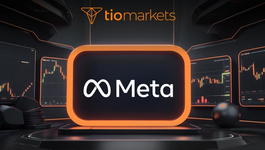Until death will do you apart! How to trade with moving averages?
BY Chris Andreou
|May 31, 2021Too many people make trading sound overly difficult as they want you to believe that you need their signal services or EAs! In reality, it is so much better to learn the tricks of the trade and become self-sufficient as a trader. All these signal service guys want is to make you dependent on them “until death will do you apart”. In this article, I’m going to show you how trading can be much simpler than you might have believed. Trading can be simple when you have the right understanding and the right tools. To demonstrate this I am going to introduce a handy tool called moving averages.
So, what is a moving average? Moving average (or MA) is a record of closing prices that adjusts to the market price each time there is a new price point (e.g. closing price). Let’s use a 20-period simple moving average (SMA) as an example. Each time there is a new closing price in your chosen timeframe, this closing price is added to the previous nine closing prices and the sum is then divided by 20. This gives you the latest value in the 20-period SMA. The value is then plotted on a chart. Eventually, you will have a string of plots that create one solid line. This line is called the 20 SMA.
When the price goes up the plot of the moving average follows below the price, and when the price goes down the moving average follows above the price. This gives us a clear indication of both the direction and the momentum (the force associated with the price move) in the market we study.
Another benefit for using moving averages is that while the price itself fluctuates randomly the moving average (because it is an average) moves in slow curves. In the EURUSD graph above the moving average moves slowly behind the price and does not fluctuate with the price itself. The moving average is, therefore, a simple technical analysis tool that is used to weed out the fluctuations in the price as well as to indicate the direction of the likely price move. It gives you the average price instead of forcing you to decipher the wild up and down swings in price.
Moving average strategies can be used in any timeframe from 1 minute to the daily or weekly timeframe. Like so often in technical analysis, technical concepts such as SMA angles and crossovers can be applied to markets in different time frames. You can make the same observations in 5-minute timeframe charts as in the hourly charts. An upward-pointing moving average follows the price below the current market price while a downward-pointing moving average does the opposite. Just by glancing the moving average you can see which direction it is pointing to and where the price is relative to the MA.
The only real limiting factor is your willingness to deal with noise. The lower the time frame the more noise there will be. Personally, I wouldn’t use timeframes below 15-minute resolution unless there was a really well-backtested strategy that traded successfully in small timeframes. Higher timeframe charts give us more reliable trading signals. The downside is that signals don’t come that often, but the good news is that they are more reliable.
Moving averages can be used as indicators of direction as discussed above but some traders also use them as support and resistance levels. As an example, if a market that is trending higher then retraces back to the 50-period moving average in an hourly or daily chart we could have a successful long trade entry opportunity. Sometimes the price goes through the level though, so risk management is a must.
Many traders employ more than one moving average in their charts. Personally, I use 20 and 50-period moving averages. When a market is trending higher the fast moving average (SMA 20) is above the slower moving average (SMA 50. This makes it is easy to spot a market that is moving higher. Just place them on your chart and you see what I mean.
Here’s one quite popular way of using two moving averages. To find a long trade we look for markets where the 20-period SMA is above the 50-period SMA. This tells us that there is upside momentum in the market. When the price returns to the 20-period moving average we start buying and place the protective stops well below the current market price.
The closer to the price the stops are the bigger the probability that the market will take them out before continuing higher. Once we have our long position we can stay with it until it reaches a price target, or alternatively, we can see that the price isn’t moving higher anymore. However, it is highly important to always limit the risk to a relatively small percentage of our trading accounts. Most successful traders don’t want to expose more than 2% of their account to the market at any one time.
Please remember that in order to make sure you are comfortable using this approach you have to do your own research and see if you can rely on this strategy idea. We do not suggest you will apply this strategy without a thorough backtesting or forward testing on your part.
Hope you found this article interesting and helpful. TIOmarkets is committed to helping you to learn and develop yourself as a trader. This is why we provide you with great market analysis and other education material at TIOmarkets.com/analysis. I share from my 20+ years of experience in markets and trading and help you to become a better trader. Also, if you haven’t yet done so, open a VIP Black account with TIOmarkets. You will get a great trading environment with tight spreads and no monthly subscription or per-trade fees.
Trade Safe
Janne Muta
Chief Market Analyst
TIOmarkets
TIOmarkets offers exclusively consultancy-free service. The views expressed in this blog are our opinions only and made available purely for educational and marketing purposes and do NOT constitute advice or investment recommendation (and should not be considered as such) and do not in any way constitute an invitation to acquire any financial instrument or product. TIOmarkets and it’s affiliates and consultants are not liable for any damages that may be caused by individual comments or statements by TIOmarkets analysis and assumes no liability with respect to the completeness and correctness of the content presented. The investor is solely responsible for the risk of his/her investment decisions.
The analyzes and comments presented do not include any consideration of your personal investment objectives, financial circumstances or needs. The content has not been prepared in accordance with any legal requirements for financial analyzes and must, therefore, be viewed by the reader as marketing information. TIOmarkets prohibits the duplication or publication without explicit approval. FX and CFDs are leveraged products. They are not suitable for every investor, as they carry a high risk of losing your capital. Please ensure you fully understand the risks involved.
Join us on social media

Experienced independent trader
Related Posts





